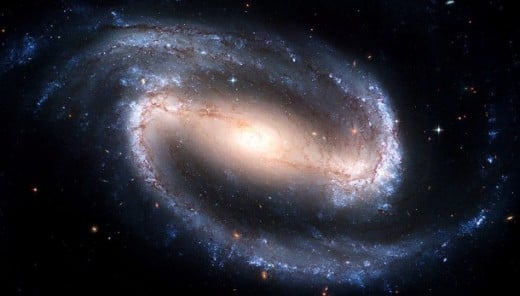Types of Galaxies

A galaxy is a huge system of stars bound together by gravity. We live in the Milky Way Galaxy, one of billions of galaxies. It is hard to appreciate how immense and enormous our galaxy is because only the closest stars are visible.
Galaxies are classified by shape: spiral, barred spiral, elliptical and irregular.
The Milky Way and about 20 percent of all galaxies are spirals. A spiral galaxy has huge, curved arms formed by stars and gases. The center of the spiral is reddish because of the many red giants there, which are reaching the end of their lives. The spiral's arms are blueish because they contain many bright, young blue stars.
About 10 percent of galaxies are barred spirals. They have two bar-shaped clusters of stars that stretch out from the center.
Most galaxies-60 percent-are elliptical. Most of these are flat and small and do not form new stars. Some elliptical galaxies rotate.
The remaining 10 percent of galaxies are irregular. These are loose collections of stars in no distinct pattern or arrangement. Two irregular galaxies, the Large and Small Magellanic Clouds, orbit the Milky Way galaxy.They were identified by Magellan in 1519,during his famous voyage around the world. He had time, it appears, to explore the skies, too.
Galaxies can be classified by their form and by the types of stars that are found in them.
(Resource: Science Harcourt School Publishers)














